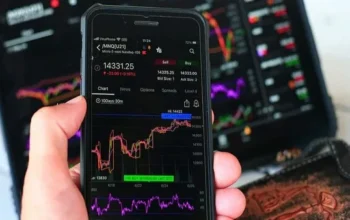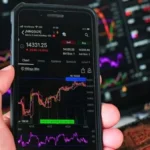Every chart tells a story, but not every part of that story matters equally. There are certain levels where price tends to pause, react, or explode, these are your support and resistance zones. They are not magic lines. They are footprints of market psychology, built by buyers and sellers locking horns. For traders focused on EUR/USD trading, these zones act as the battlegrounds where the biggest decisions are made.
Why Zones Matter More Than Levels
Many beginners draw straight horizontal lines and expect price to bounce or break with surgical precision. Professional traders think differently. They look for zones where the market has previously reacted. These are more forgiving, more realistic, and far more useful in real-time trading.
In EUR/USD trading, zones tend to form around prior highs and lows, major psychological levels like 1.1000 or 1.0500, and areas where big institutional orders were likely filled. Price does not need to touch the same pip to react. It just needs to enter the same zone of interest.
Finding the Most Relevant Support and Resistance
Start by zooming out. Use the daily or four-hour chart to identify major swings, then work your way down to lower time frames. Look for areas where price stalled, reversed, or exploded in the past. The more times price reacts in the same area, the stronger the zone becomes.
You should also pay attention to whether the market respected a level with clean rejections, strong engulfing candles, or long wicks. These price action signals add weight to the zone and make it more trustworthy in future setups. In EUR/USD trading, zones that held during major news events tend to attract the most attention from large players.
Support Turns into Resistance and Vice Versa
One of the most useful principles in trading is role reversal. A zone that once acted as resistance often becomes support when price breaks above it. Similarly, support can flip into resistance after a breakdown.
These moments are perfect for watching how price behaves. If price returns to a former resistance area and forms a bullish candle or rejection, it may be a strong buy opportunity. In EUR/USD trading, this concept helps traders anticipate rather than react blindly.
How to Trade Reactions at These Zones
Support and resistance do not just help identify where to enter. They guide where to place stops and take profits. Many traders wait for price to enter a zone and then look for a confirmation signal — a pin bar, an engulfing pattern, or a strong close on the lower time frame.
Other traders anticipate reactions and set pending orders just inside the zone. Whichever style you choose, make sure the risk is well-defined. In EUR/USD trading, these zones provide some of the cleanest risk-reward setups available, especially when aligned with trend direction.
Using Confluence for Stronger Zones
Support and resistance zones become more powerful when they line up with other forms of technical analysis. This could be a Fibonacci retracement level, a moving average, or even a trendline. When multiple tools point to the same area, traders call this confluence.
In EUR/USD trading, confluence zones often become magnets for price. They tend to draw in attention, volume, and momentum. Trading from these areas means you are not relying on just one signal, but on a cluster of conditions that increase your edge.
Support and resistance zones are not about prediction. They are about preparation. They give traders a structured way to read the market, spot opportunity, and manage risk. For EUR/USD, a pair that respects levels and reacts to global events, these zones often become the starting point of every meaningful move. When you learn to identify them clearly and trade around them with discipline, your chart stops being noise and starts becoming a roadmap.









